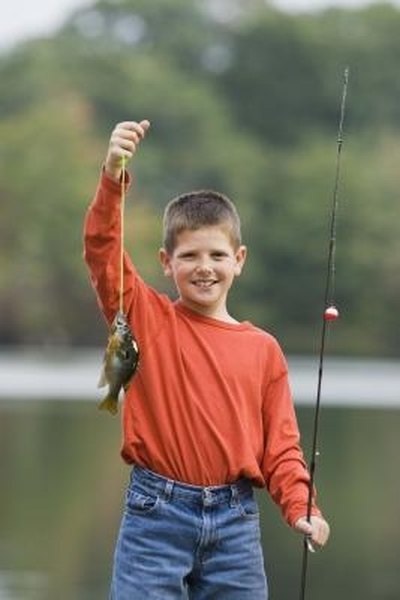
For many anglers, Zebco is a name often associated with fishing. A variety of fishing equipment, including rods and reels, is produced by the company. The easy-to-use and durable spin-cast reels made by Zebco are particularly well known. Models such as the Zebco 33 are used by a range of anglers including youth and those first learning to fish. Spooling a Zebco 33 involves installing new line as part of routine maintenance.
Items you will need
Zebco 33 spin cast reel with matched rod
Monofilament fishing line
Scissors
Remove any old line remaining on the Zebco 33 by pressing the large spool release button on the back of the reel. Grasp the old line and pull it from the reel.
Open the front spool cover of the Zebco 33 reel by turning it slightly to the left and then pulling it straight off.
Cut the line free from the Zebco 33 spool with a pair of scissors. Pull the line through the front spool cover and through the line guides along the length of the rod.
Feed new monofilament line through the rod tip and down the length of the rod through each line guide.
Thread the line through the hole in the center of the front spool cover and then around the spool of the reel.
Attach the line to the spool of the Zebco 33 with an Arbor knot. Moisten the knot and then pull the knot down tightly against the spool of the reel. Trim excess line from the free end of the knot with scissors.
Place the front spool cover back on the reel. Hold the line a few inches in front of the spool and apply slight tension to the line. Wind the line onto the reel by turning the handle of the reel.
Tips
- As a rule of thumb, fill the spool with 130 yards of 10-pound test monofilament fishing line. Using lower-pound test line will typically allow for more line to be installed while the use of heavier-pound test line will reduce the amount of line that can be installed.
References
Tips
- As a rule of thumb, fill the spool with 130 yards of 10-pound test monofilament fishing line. Using lower-pound test line will typically allow for more line to be installed while the use of heavier-pound test line will reduce the amount of line that can be installed.
Writer Bio
Keith Dooley has a degree in outdoor education and sports management. He has worked as an assistant athletic director, head coach and assistant coach in various sports including football, softball and golf. Dooley has worked for various websites in the past, contributing instructional articles on a wide variety of topics.


